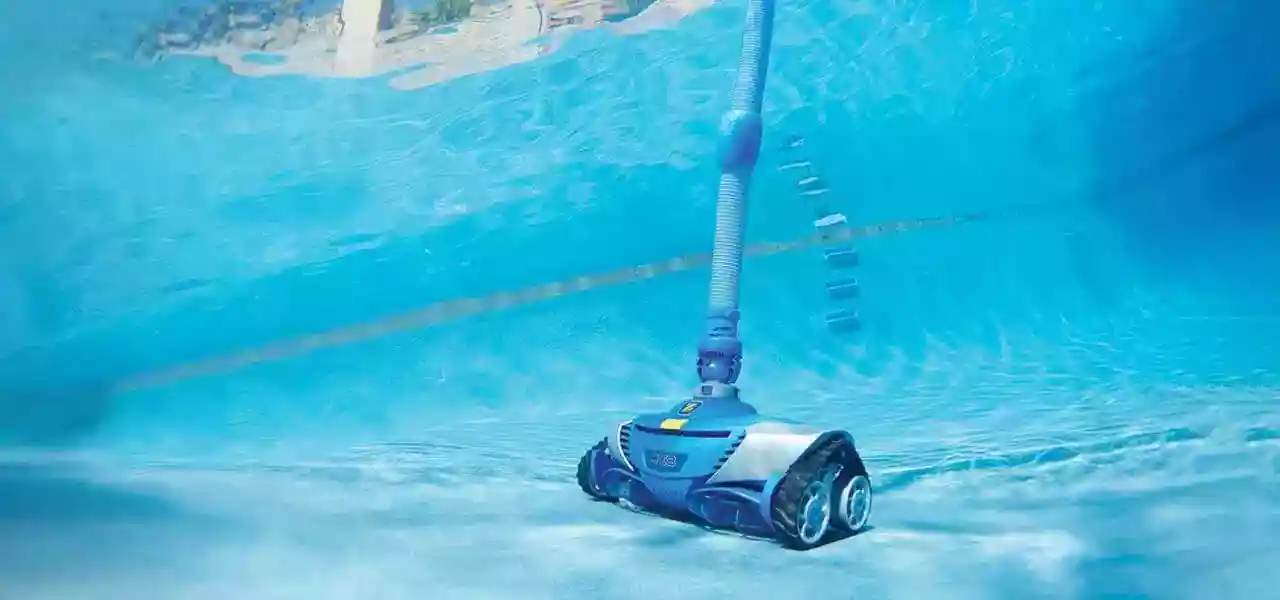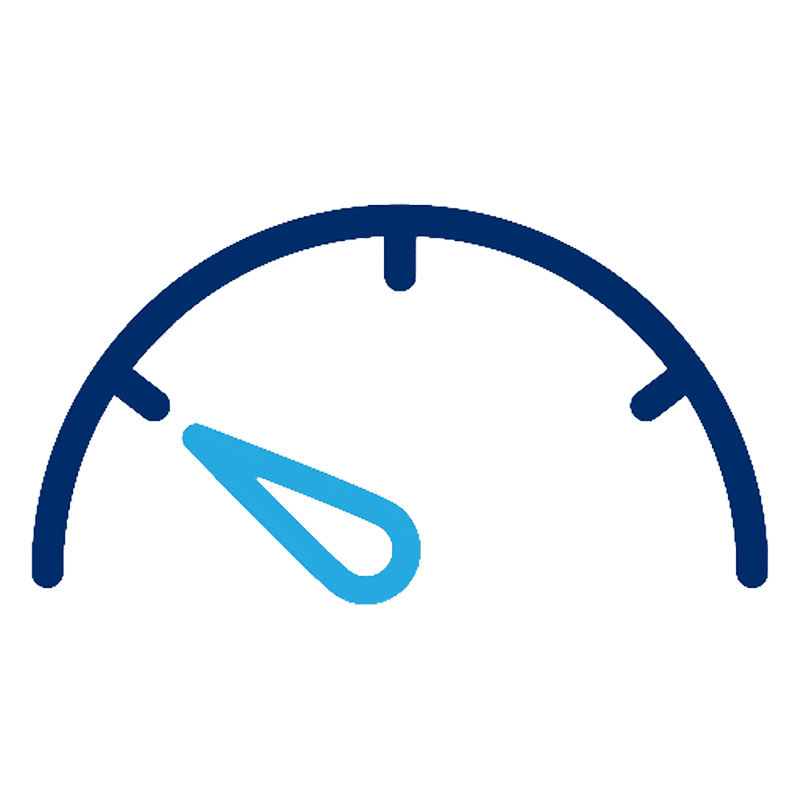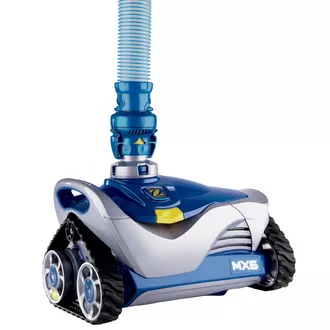FREE Standard Shipping On All Orders $100 or More!*

Automatic Pool Cleaner Troubleshooting Guide
Automatic pool cleaners are an integral part of pool maintenance. Disaster strikes and time comes to a standstill if your pool cleaner stops working. Whether you have a suction side, pressure side, or robotic pool cleaner, you will eventually experience some problems, like the ones discussed below. This post covers common pool cleaner troubleshooting steps to help get your cleaner back into gear!
The Three Types of Automatic Pool Cleaners
There are three main types of pool cleaners: suction side, pressure side, and robotic. Suction side cleaners connect to a suction line in your pool, like the wall skimmer, or a dedicated cleaner line that sucks water into the filter pump. Pressure side cleaners operate on the pressure side of the filter pump, which pushes water into the cleaner's booster pump. Robotic cleaners are independent of the filter pump, and get their power from a standard power cord.
Like any part of your pool equipment arsenal, pool cleaners malfunction from time to time. This post covers the solutions to common suction side, pressure side, and robotic pool cleaner problems. If your automatic cleaner or pool vacuum isn't working, this is the post for you!
Troubleshooting Suction Side Cleaners
Powered by the suction of the pump's water flow, suction side pool cleaners clean the whole pool in a random pattern while the pool circulation system is on. Follow the suction side pool cleaner troubleshooting tips below to solve any issues.
Suction Side Cleaner Does Not Move
Verify the cleaner hose is securely attached to the suction line in the skimmer or cleaner line. Then inspect the hose sections for any air leaks. Close other suction lines, such as the main drain or another skimmer, to increase the suction on the line the cleaner is connected into.
Problems to check for:
- For low suction pressure, improve draw by closing drain and other suction lines.
- Dirty pump basket or skimmer basket, or inline strainer basket.
- Cleaner stuck onto high spot in the pool floor.
- Cleaner stuck onto floor drains or pop-up in-floor cleaner heads.
- Air leaks in cleaner hose, or on pipes in front of filter pump.
- Clog in the cleaner head or hose; check for obstruction.
- Low or high pool filter pressure gauge readings, indicating flow problems.
- Bad connection to skimmer, not making a tight seal of hose to skimmer.
- Problems with automatic bypass valve or skimmer connection devices.
- Failed or stuck diaphragm or flapper in the cleaner head.
Suction Side Cleaner Is Too Slow
The main reason for this type of issue is typically a congested pool filter or clog at the intake hole at the bottom of your pool cleaner. Clean the intake hole by flipping the cleaner over and clearing out any debris. Also check for obstructions inside the hose and verify all hose connections are secure.
After clearing the intake hole, clean the skimmer basket, pump strainer basket, and pool filter. Remove any debris and check for damages to the skimmer and strainer baskets. Leaves, rocks, or other rubbish in the baskets will reduce your pump's water flow and slow down the suction side cleaner.
A clogged basket or dirty filter are the two main causes for a sluggish suction side cleaner. Another potential problem is an air leak in the cleaner hose or the pump. Worn footpads or seals can also reduce cleaner speed and cause it to stick to the pool floor. Finally, check that the suction valves are open to give all suction pressure to the skimmer connected to the cleaner.
Suction Cleaner Is Too Fast

Suction pool cleaners work based on your pool pump's water flow. Powerful pool pumps create strong water flow, which can cause your suction side cleaner to move faster than normal. Just because your cleaner is fast doesn't mean it's efficient. A speedy suction side cleaner will zip past dirt and debris, leaving behind a dirty pool.
Most suction side cleaners have a device in the skimmer that allows you to control the water flow. You can also open other suction lines, like the main drain, to reduce the flow of water entering the cleaner.
Suction Cleaner Does Not Cover Entire Pool
If your suction side cleaner does not cover your entire pool, check the hose length! The hose determines how much room the cleaner has to move in your pool. Ideally, the hose needs to reach from the skimmer to the farthest point of your pool, and still have a few feet to spare. Purchase a new hose if your current one is too short for your pool.
If the cleaner's hose length isn't the problem, inspect your pool's return jets. Adjustments to the direction of the return jets in your pool can affect cleaner coverage. The returning water may be pushing your cleaner away from certain areas.
Air Bubbles at Return Line
Air leaks in the hose or connections often cause air bubbles at the return line. Verify the vacuum connections are securely sealed, and that the hose is not punctured. Air will leak into the system if the connections are loose or if the hose is damaged. Replace damaged O-rings, and seal hose leaks with silicone or rubber cement.
Suction Cleaner Gets Stuck on Steps/Ladders

If your cleaner gets stuck on or under your pool ladder, install a ladder guard kit. If it sticks on a raised main drain cover, look at the UniCover, which creates a smooth transition from floor to drain. You can also adjust the hose floats or hose weights (depending on the model), to change the cleaning pattern. As a last resort, place a small boulder in the area, or shorten the pool cleaner hose.
If your pool cleaner gets stuck on the main drain cover because it's raised above the floor, install a Unibridge to keep your cleaner from getting stuck on raised floor fittings. Reduce the speed of the cleaner if it jams on convex or concaved spots on the pool floor. For gunite pools, a more drastic method would be to shave off the plaster or fill in with more plaster in that area to make it smooth.
Visit our pool cleaner parts department for any spares you need, or for more ideas to keep your pool cleaner from getting stuck.
Troubleshooting Pressure Side Cleaners
Powered by the pressure side of your pool pump system, pressure side pool cleaners don't use your pool's filtration system to filter out debris. Follow the pressure side pool cleaner troubleshooting tips below to solve any issues.
Pressure Side Pool Cleaner Does Not Move
Pressure side pool cleaners need about 30 psi to operate. Verify the booster pump is operating, and the filter and pump are turned on and running. Rocks or sand can lodge in the wheels of a pressure side cleaner, preventing movement. Likewise, tiny grains of sand or plaster can make their way around in-line strainers and clog up small openings inside the cleaner.
Pressure side cleaner wheels can be shaft driven, belt driven, or chain driven. Check the tires often for obstructions or damages by slowly turning one wheel at a time. If one wheel turns and the other doesn't, look for anything blocking the wheel.
Pressure Pool Cleaner Is Slow
Check the in-line strainer(s) for debris slowing down the water flow to the cleaner. Also check the hose to verify that pressure is not lost somewhere along the line. Slight water loss around the hose swivels is normal.

Loose wheels or loose drive belts can cause your cleaner to behave sluggishly. Worn tires will reduce speed and wall climbing ability. Damaged or missing wheel bearings can cause slow movement. Check your owner's manual for specific adjustments for your particular pressure pool cleaner.
Since pool water powers pressure side cleaners, a slow moving cleaner is likely caused by inadequate water pressure. Check the filter screens, located at the wall attachment, and in the hose on some newer models. If a booster pump is being used, be sure that both the filter pump and booster pump are operating and not leaking or making funny noises.
With the booster pump running, grab the pool cleaner hose, and slowly pull the cleaner toward you, inspecting the hose for leaks as you pull it out of the water. Hold the cleaner head just above water and inspect it for water moving through the thrust jet, the sweeper tail, or out the debris bag. The thrust jet and sweeper tail should shoot water 15–20 feet. Likewise, if you remove the debris bag, water should spray upward 15–20 feet in the air. If the water is spraying properly out all three exits, you likely do not have a water pressure problem, but a problem with the drive belts slipping, a broken axle, or worn tires.
Pressure Cleaner Does Not Cover Entire Pool
For this problem, all you need to do is adjust the thrust jet, located on the back center, where the water sprays out. The default setting is 11 o'clock, but placing it at 1 o'clock will give the cleaner an opposite cleaning pattern.
The feed hose must be long enough to reach from the wall connection to the farthest point in your pool, with a few feet leftover. Also, make sure the feed hose is floating properly, not sinking or drooping.
Slipping wheels can cause a pressure side cleaner to get stuck in the deep end and not have the strength to pull itself back up into the shallow end. Check belt tension or axle adjustments on newer models, or the front wheel "teeth" on older Polaris and Letro models.
Strong pressure from wall or floor returns can push a cleaner away from certain areas. In such cases, redirecting the eyeball fittings or nozzle can fix the problem.
Pressure Cleaner Gets Stuck on Steps/Ladders
If the pressure cleaner gets stuck on the stairs, adjust the thrust jet to create a new cleaning pattern. Install ladder guards to block the path around rails to prevent the cleaner from wrapping around the handrail. If the cleaner is going behind ladders or handrails and getting stuck, use a ladder guard. Another option is to remove the ladder if it's rarely used, or shorten the cleaner hose slightly for entry step handrails.
Change the direction or cleaning pattern of the cleaner if its stuck in a corner of the pool or stuck up against a step. Adjust the thrust jets, hose float, or add weights to the hose to alter the cleaner's pattern or direction.
As a last resort, place a small boulder in the area, or shorten the pool cleaner hose. Note that most pressure pool cleaners have reverse mechanisms or backup valves to reverse the cleaner direction every few minutes and prevent stalled operation. If equipped, verify your backup valve is working.
Pressure Cleaner Feed Hose Becomes Tangled

Measure the hose to the proper length for the pool size — too much hose will cause tangling. You also need to check that the feed hose is floating properly. Waterlogged hose floats should be replaced, and hose swivels should rotate freely. Another possibility is that not all wheels are being powered. Rotate one of the wheels when the cleaner is in OFF mode, and make sure all wheels turn together.
Too much power to a pressure cleaner can cause it to fly around the pool and tangle itself. Bleed off excess pressure at the wall fitting to slow down the cleaner. If the thrust jet is in a 9 or 3 o'clock position, this will create a circular pattern, which may cause tangling. Visit our pool cleaner parts department for all the parts mentioned above.
If your pool cleaner hose hung on a hook all winter, or the hose was wrapped too tight, it can develop a kink in the hose that causes it to twist and tangle. One solution is to stretch the hose out along the pool deck in the hot sun, using weights if needed, to straighten out. A last resort may be to replace some hose sections.
Troubleshooting Robotic Pool Cleaners
Robotic pool cleaners are electric, and don't rely on the water flow from your pump's suction or pressure side to move around the pool. Follow the robotic pool cleaner troubleshooting tips below to solve any issues.
Robotic Pool Cleaner Does Not Move
The floating power cord for your robotic pool cleaner should be firmly plugged into the power supply transformer, which is plugged into an outlet. The power supply should have an indicator light showing that power is being received.
If the cleaner is receiving power, but not moving, faulty or old wiring is likely the cause. Oftentimes, the wires inside the rubber casing will short out or break. Broken or shorted wires are typically located where the power cord meets the cleaner, where the stress on the cord is highest.
If the cord is intact, test the resistance of the wire with a test meter to ensure that the cord wires are not an issue. At this point, check the drive motor itself, to verify connections are tight. Additionally, use the test meter to check that the power is reaching the motor. If it is, and the motor is not responding to the power, you may need a new drive motor.
Robotic Pool Cleaner Is Slow
This is usually a problem of loose drive tracks, loose drive belts, or missing small parts that keep tension on the belts and tracks. You may notice that the cleaner moves, but doesn't climb the walls. This could indicate worn drive tracks or wheel tube brushes.
When it occurs, however, the cause can be a full debris bag or filter, or the drive tracks or wheels have become worn or rounded, or are loose or out of alignment. Check all the belts and pulleys for proper position and tension, and the wheels for proper alignment and movement.
More Pool Cleaner Troubleshooting Tips
If everything has failed, and your pool cleaner is being stubborn and refuses to cooperate, it may be time to call one of our pool specialists/advisers who can assist further with troubleshooting or repair. Of course, our specialists can also help you select a new pool cleaner if you'd rather just start over.
Most of the time, your pool cleaner just needs a few tweaks here or there, or some pool cleaner parts, and it's off and running again.
Pool Cleaner is Not Cleaning
If your pool cleaner moves around the pool normally, but does not pick up debris, clear the clog in the suction throat, or empty the debris bag or basket. Suction cleaners also need a clean pool filter to move and vacuum well.
If your pool cleaner does not clean the entire pool, adjust the cleaning pattern or speed. Increasing the pool cleaner speed is possible on pressure cleaners by closing the bleeder valve at the wall connection. For suction cleaners, closing other valves while using the cleaner and keeping the basket clean can improve speed. If your pool cleaner seems slower than normal, look for the cause of the pressure loss (or suction loss).
Pool Cleaner is Not Climbing Walls
When a pool cleaner does not climb the walls, there is a problem with the cleaning pattern or cleaner speed. Making adjustments to the cleaner pattern as described above may produce different results, allowing the cleaner to make a better approach to the wall. Adjusting the cleaner speed is another way to overcome problems climbing the pool walls. It takes a lot of traction and suction to climb a pool wall without falling off. If it's not climbing the walls like it used to, it's probably also going slower. Be sure there are no pressure leaks or suction leaks in the hose that connects to the cleaner, and that the hose is not getting in the way. Tangled pool cleaner hoses are usually the result of waterlogged or poorly placed hose floats.
Pool cleaners require timely replacement of pool cleaner parts to operate at their full potential and prevent failure. If your pool cleaner is beyond repair and it's time for a new one, check out our selection of over 100 pool cleaners, in stock and ready to ship!

